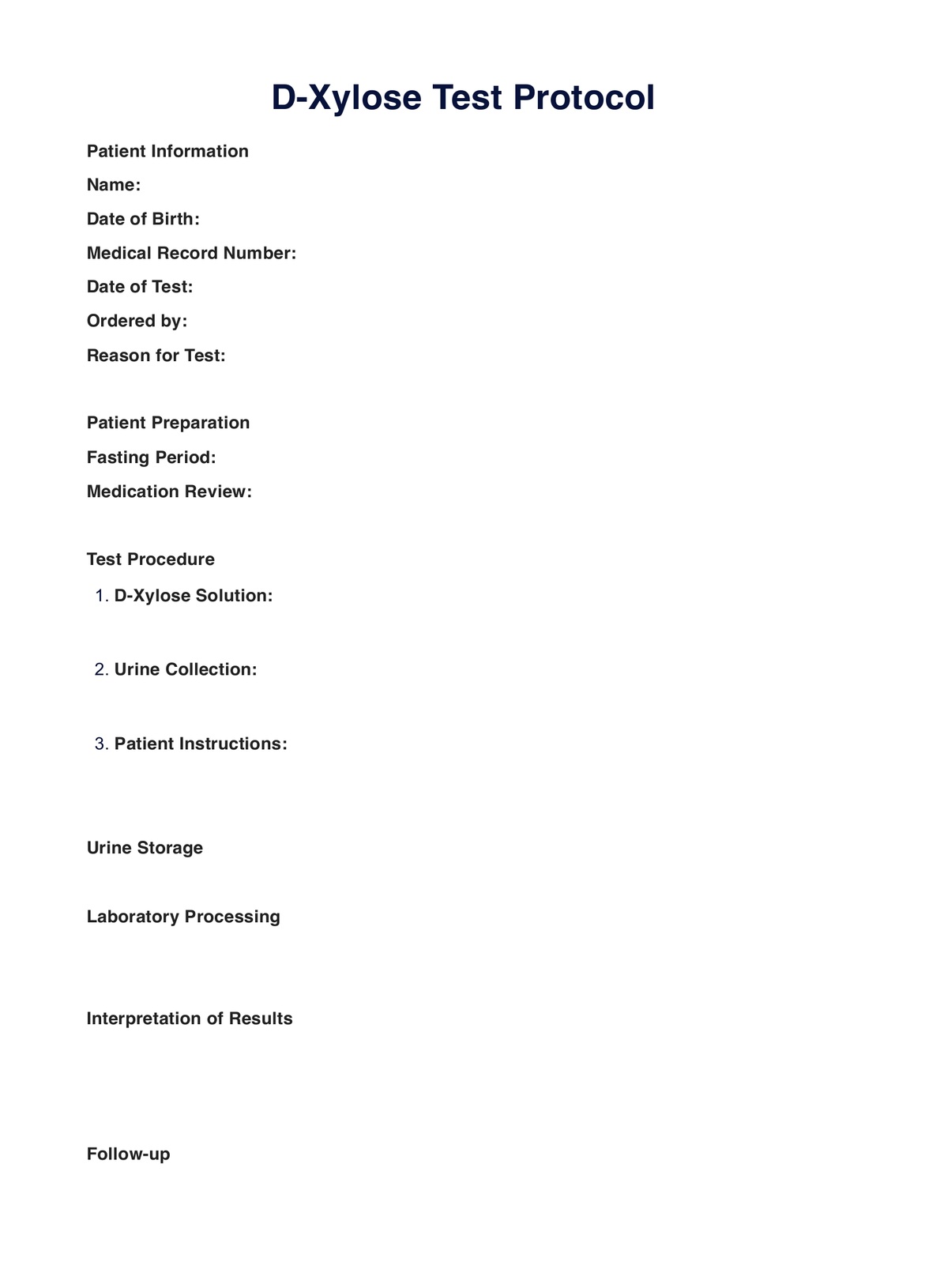Gastroenterologists, internists, pediatricians, and other healthcare providers may request a D-Xylose Test when assessing patients with gastrointestinal symptoms, unexplained weight loss, or suspected malabsorption disorders.

D Xylose
Discover the D-Xylose Test, a valuable diagnostic tool for assessing small intestine health and nutrient absorption. Learn more.
Use Template
D Xylose Template
Commonly asked questions
D-xylose tests are used when there's a suspicion of malabsorption issues, celiac disease, Crohn's disease, tropical sprue, unexplained weight loss, chronic diarrhea, or nutritional deficiencies.
?
In a D-xylose test, a patient consumes a measured amount of D-xylose, and urine is collected over a few hours. The collected urine is analyzed to assess the small intestine's absorptive capacity.
?
EHR and practice management software
Get started for free
*No credit card required
Free
$0/usd
Unlimited clients
Telehealth
1GB of storage
Client portal text
Automated billing and online payments











